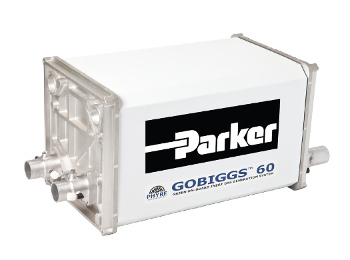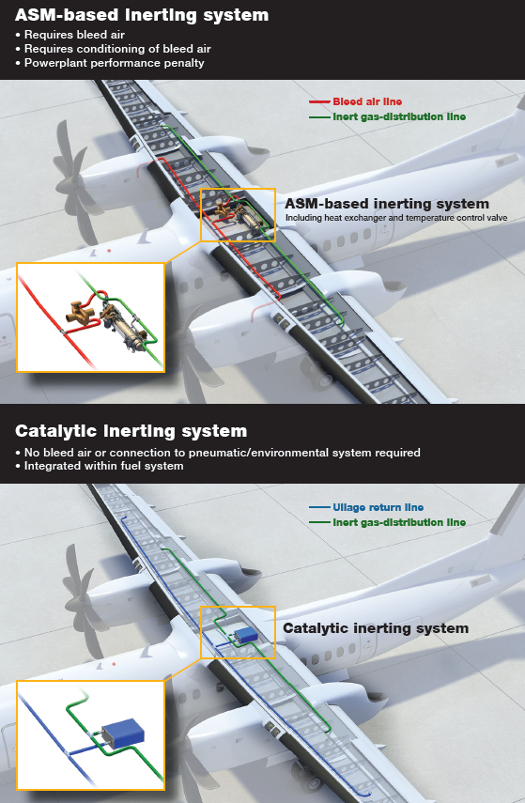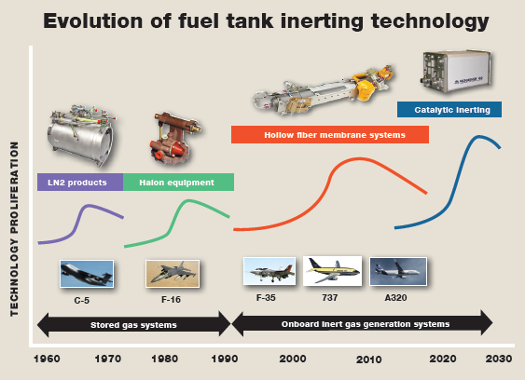 |
| August 09, 2016 | Volume 12 Issue 30 |
Designfax weekly eMagazine
Archives
Partners
Manufacturing Center
Product Spotlight
Modern Applications News
Metalworking Ideas For
Today's Job Shops
Tooling and Production
Strategies for large
metalworking plants
Parker Aerospace and Phyre Technologies ready catalytic inerting technology for aircraft fuel tanks

Parker Aerospace (part of Parker Hannifin Corp.) is working with Phyre Technologies to further develop catalytic inerting technology for aerospace applications. The two companies recently signed an exclusive license agreement to validate Phyre's patented catalytic inerting technology. Parker brings more than 50 years of fuel-tank inerting expertise to the table as the companies collaborate to bring catalytic inerting to the marketplace.
This innovative concept advances fuel-tank inerting technology beyond the current applications.
Conventional inerting
Hollow fiber membrane-based air separation module (ASM) technology has been the dominant technology for aircraft fuel-tank inerting systems for the last 20 years. In general, ASM-based inerting systems are significantly better than historical fuel-tank inerting technologies, such as LN2, Halon, pressure swing adsorption, and reticulated foam. However, ASM-based systems need high-pressure air in order to function. Typically, this high-pressure air is taken from the aircraft pneumatic system.
Catalytic inerting
The recirculating catalytic inerting system draws ullage gas from the fuel tank, reacts the gas stream in a catalyst, cools the gas stream, removes the water, and returns the inert products of the reaction back to the fuel tank. The catalytic inerting system requires no bleed air or attachment to the aircraft pneumatic system, which can be a significant advantage for aircraft powered by turboshaft, turboprop, or small turbofan engines.
The next evolution of fuel-tank inerting
The new alliance between Parker Aerospace and Phyre Technologies follows research and development by Phyre that culminated in successful demonstrations of the company's "GOBIGGS" or Green OBIGGS (on-board inert gas generation system) on several military applications. It is considered "green" because the system minimizes unburned hydrocarbons vented from the fuel tank into the atmosphere.

"Parker's work with Phyre will advance the state-of-the-art in fuel-tank inerting technology by developing the catalytic inerting concept into a commercially viable reality," said Bryan Jensen, Parker Aerospace's principal engineer for fuel-tank inerting. "Catalytic inerting holds the promise of generating inert gas onboard the aircraft with a system that does not require a source of high-pressure air. The system would only require interfaces with the fuel tank and aircraft electrical system.
"Bleeding engines to supply a conventional ASM-based inerting system can be particularly burdensome for aircraft powered by engines that have little or no bleed air available, such as turboshafts (helicopters), small turbofans (business jets and unmanned aerial vehicles), and turboprops (short-haul transports)."

Stuart Robertson, chief executive officer of Phyre Technologies, said that the final catalytic system that will eventually go to market will not only be significantly smaller and lighter, but that its maintenance costs are anticipated to be considerably reduced as well.
Source: Parker Aerospace
Published August 2016
Rate this article
View our terms of use and privacy policy
